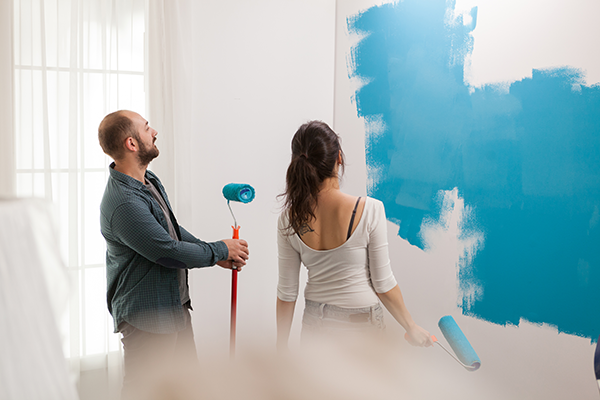Transform your entire home with professional whole house painting services. Our expert painters deliver flawless results, enhancing aesthetics and protecting your investment. Schedule a consultation today for a fresh, cohesive look.

Whole house painting involves refreshing or changing the paint on a home’s interior and/or exterior surfaces. This comprehensive project can significantly enhance the aesthetics, protect surfaces, and increase the value of your home. Here’s a detailed guide on tackling a whole house painting project:
1. Assessment and Planning
– Evaluate the condition of the surfaces to be painted.
– Decide on the color scheme for different areas.
– Determine the type of paint needed (interior, exterior, finishes, etc.).
– Estimate the amount of paint and supplies required.
– Decide if you’ll do it yourself or hire professionals.
2. Gathering Supplies
– Paint (interior and exterior as needed)
– Primers
– Brushes, rollers, and paint sprayers
– Painter’s tape
– Drop cloths or plastic sheeting
– Sandpaper and spackling paste
– Cleaning supplies
1. Rooms and Walls
– Preparation: Remove furniture or cover it with drop cloths. Clean walls, fill holes, and sand rough areas.
– Priming: Apply primer to ensure better paint adhesion and even color.
– Painting: Use a combination of brushes for edges and rollers for larger areas. Apply at least two coats for uniform coverage.
2. Ceilings
– Preparation: Clean the ceiling and remove any dust or cobwebs.
– Painting: Use a roller with an extension pole and flat paint to minimize the appearance of imperfections.
3. Trim and Doors
– Preparation: Clean and sand surfaces.
– Painting: Use semi-gloss or high-gloss paint for durability. Use a brush for precision.
4. Washrooms
– Preparation: Ensure surfaces are clean and dry. Remove any mildew or soap scum.
– Painting: Use mold-resistant paint. Ventilate the area well during painting and drying.
5. Basements
– Preparation: Address any moisture issues before painting.
– Painting: Use moisture-resistant paint. Apply primer if needed.
1. Siding
– Preparation: Clean the siding with a pressure washer. Repair any damaged areas.
– Priming: Apply primer to bare or repaired surfaces.
– Painting: Use exterior paint suitable for the material (wood, vinyl, etc.). Apply with a brush, roller, or paint sprayer.
2. Trim, Windows, and Doors
– Preparation: Clean and sand surfaces. Remove old, flaking paint.
– Painting: Use durable exterior paint. Apply multiple coats for protection.
3. Decks and Fences
– Preparation: Clean and sand the wood. Repair any damaged areas.
– Painting/Staining: Use paint or stain designed for exterior wood. Apply a sealant for added protection.
4. Garage
– Preparation: Clean and prep the surfaces. Repair any damage.
– Painting: Use paint suitable for the garage’s material (wood, metal, concrete).
1. Stairs
– Preparation: Clean and sand surfaces.
– Painting: Use durable paint, especially for treads.
2. Furniture
– Preparation: Sand and clean the furniture.
– Painting: Use appropriate paint for the material and apply a protective finish.
1. Clean Up
– Remove painter’s tape carefully.
– Clean brushes, rollers, and other tools.
– Dispose of any paint cans and materials properly.
2. Inspection and Touch-Ups
– Inspect all painted areas for any missed spots or imperfections.
– Perform any necessary touch-ups.
– Weather Considerations: For exterior painting, choose days with mild temperatures and no rain forecast.
– Ventilation: Ensure proper ventilation when painting indoors to avoid fumes.
– Safety: Use ladders and scaffolding safely. Wear protective gear like masks and goggles.
– Quality Tools: Invest in high-quality brushes and rollers for a smoother finish.
– Time Management: Plan your project in stages to avoid being overwhelmed.
By following these guidelines, you can achieve a beautifully painted home that looks fresh and well-maintained. If you have any specific questions or need further advice, feel free to ask!
